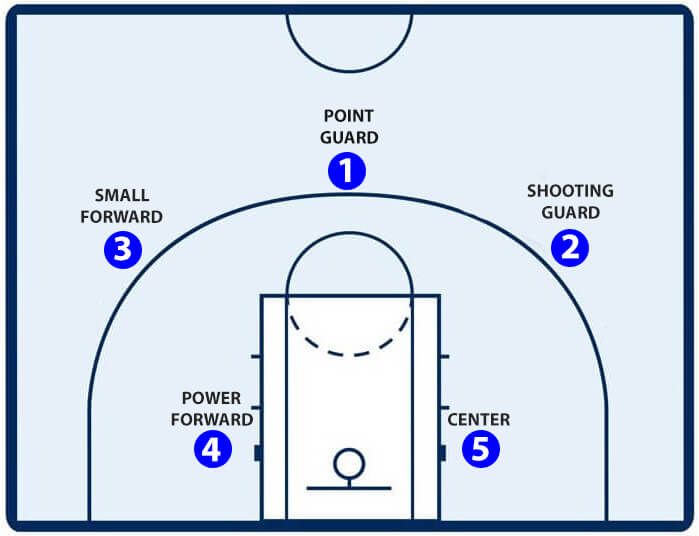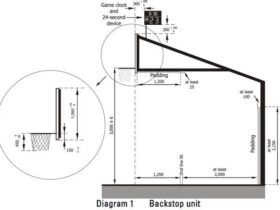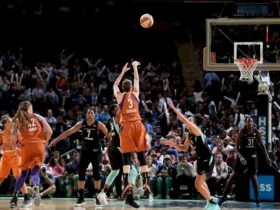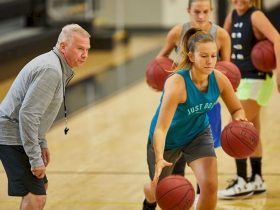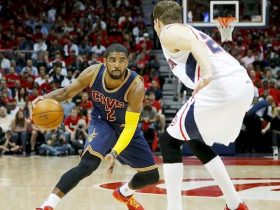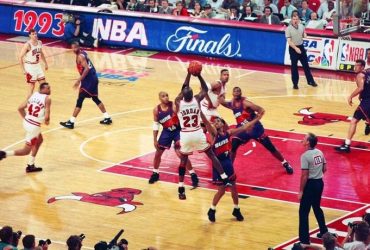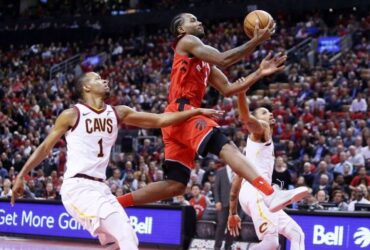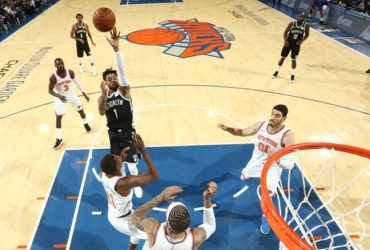As we know, basketball consists of 5 players and has their respective functions and duties. If you are new to the positions, just take a look at this review regarding the 5 positions in basketball and their duties and functions.
Know the 5 Positions in Basketball
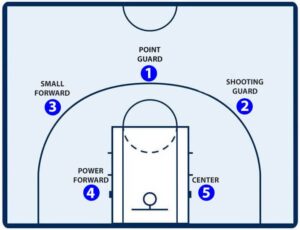
The basketball game consists of 5 player positions, of course, the five players have their respective roles and functions. Therefore, to achieve victory, the players must be able to be united, support each other and be responsible for their roles.
Among these five positions, some players have the goal of balancing their team’s play and managing defense and offense tactics.
The players in the NBA basketball competition usually have a special profile and expertise from an early age.
Basketball schools in America themselves have described the players according to the talents and desires of the players.
Players who want to fill a certain position, then the player must have the appropriate skills or expertise.
This is done to make the ball distribution match coordinated, neat, and following the strategy set by the coach.
The sports revolution made the player’s position not have to focus on physical things such as height. Because many other aspects are taken into consideration, namely skills such as the ability to read players, the foresight to open space, rebounding, shooting, to vertical jumps.
The five positions in basketball include Point Guard, Shooting Guard, Small Forward, Power Forward, and Center.
This is an explanation of the 5 positions of basketball players and their duties and functions that you must know
below are the 5 positions of basketball players along with their duties and functions.
Point Guard
The first position or called player number 1 is the Point Guard. Even though it is called player number 1, it does not mean that this is the main player or the number one choice player for the scoring option. Called the number 1 player, Point Guard is the earliest role.
Point guards or guards will usually fill positions that focus outside the parameter line, precisely in the middle of the field.
Point guards have a task that regulates the rhythm of the game or is called creating assists, so Point Guards are also called PlayMakers.
The abilities that must be possessed by a Point Guard are mastering ball handling, mastering reliable passing techniques, skills in reading match situations, so that they can act quickly and efficiently.
Usually, Point Guard players have a physical body with a height of 185-195 cm. With this height, it is advantageous because players have speed, breadth, and good footwork.
Shooting Guard
Shooting Guard or the player with the number 2 position is a player who has a role as a guard and is in charge of filling the perimeter line area when committing an offense. Not only that, this position is in charge of being a blocker for the opponent’s shooters during a state of defense.
Players with Shooting Guard positions usually can shoot with the best percentage in their team. As the name suggests, Shooting Guard is the position that scores the most points during the match.
Not only having the ability to shoot 3pt outside the perimeter, but the Shooting Guard must also have the ability to shoot and complementary attributes, such as layup, dunk, catch and shoot, midrange shoot, fadeaway shot to corner shoot.
There are many nicknames given to shooting players ranging from 3-and-D players or players who are responsible for shooting 3 points along with the defense parameters and the nickname spot-up shooter.
Where players in this position only need to have good off-ball movement to find shooting space and shooting abilities from all areas of the field. So, players in this position do not need to have good handling or passing.
Small Forward
The player with the number 3 position or also called the small forward position. This position is a position that is in great demand by many players.
Because, players in this position must have real basketball skills, ranging from athleticism, agility, slam dunk, alley-oop, shooting, and other skills that are at the highest level.
The Small Forward position which is usually the main scoring position makes this player a reference in building a team.
Small Forward must have good shooting skills and can fill all areas of the field and no less important is agility because this is very much needed during transitions or fastbreak moments.
In the NBA, the Small Forward position is played by players who have the instinct to score high numbers.
Power Forward
Player number 4 or called Power forward is a position filled by players who are highly capable of doing defensive rebounds and have a height that is almost like a center.
Power forward used to play close to the rim, in either attack or defense. Therefore this player is called a backup center.
The difference is that the Power Forward ability is more complete, has good shooting skills, and has more agile movements.
In the NBA Power Forward, players have a physical body with a height reaching 198-210 cm. In addition, Power Forward players in matches usually do double-doubles or triple-trips.
This position will become more difficult to stop if his scoring and defensive skills are continuously honed.
Center
Finally, position number 5 or center, this position is the position of the highest player in the team or called the big man.
A Center usually has a physical body with a size of 7 feet or about 213 cm. The Center has excellent rebounding ability.
Centers in NBA competitions have very complex functions. Where this position has the task of being a shot blocker, protector, and responsible for the defense sector.
As the player with the highest roll, the center must be the best bouncer and finisher for his team. In addition, a center player must have the most accurate passing. Because he always plays in a position below the ring and close range.
Basketball Players by Position
Basketball players can be categorized based on two major positions in play which are as follows:
Backcourt
The first category is Backcourt. Most positions in his play are outside the circle of the 3-point line.
The backcourt will be in the back row when the team is in an attacking position, this is done to protect the 3 players in front. Meanwhile, in the defense phase, the backcourt will be in the outer area to be the team’s first protector against the opponent’s attack.
Frontcourt
Both Frontcourt positions. This frontcourt position is filled by players who have duties close to the opponent’s ring area or right in the front row.
The frontcourt is filled with 3 players, namely 2 forwards and 1 center. The frontcourt will change position to become the last wall during the defense phase which aims to protect the paint area.
Now that’s the category of player positions based on their playing area.
Basketball Player Position Terms
After getting to know the positions of basketball players, it will be more complete if you learn about the term 5 positions in basketball and their duties and functions. Below are the terms you can learn.
General Floor
The first term is General Floor, this is a term commonly used to refer to guards, especially point guards who have the task of distributing the ball and attacking tactics.
This term could also be included in the Combo Guard which has the same role in handling the ball as a substitute for the Point Guard task.
Wing
The term Wing is commonly used to describe basketball players who have positions in the parameter area.
This position is usually filled by two types of players including Shooting Guard and Small Forward.
Players in this position can also play in the corner and elbow areas. The team needs the wings to get creative to build attacks and play Iso ball.
Swingman
Third, there is the term swingman which is used for players who can operate in two positions at once including Shooting Guard and Small Forward.
The two positions of these players have characters that are not much different, therefore players can do switching in their position which is also called Swingman.
Pivot
Pivot here is a term describing the role of central players in basketball games. Pivot here is defined as the center or center of the movement of the ball.
The term pivot is also referred to as a spur point, this is because the team needs this player in carrying out the big ball strategy plan.
Combo Guard
The term Combo Guard is used for the nickname of Shooting Guard players who can do handling and dribbling like Point Guard players.
More broadly, Combo Guard means a player who plays two roles at once in one match.
At a time when the team does not have many options for a quality Backcourt as expected, this role will be needed. The role of the Combo Guard is quite dominant in several NBA teams.
Combo Forward
Combo Forward is a term for the nickname of a player who can play the role of Power Forward and Small Forward at the same time.
Combo Forward is also referred to as a player who can do the switching as needed.
Combo Forward positions are usually filled by players who have good agility with their large bodies.
Point Forward
The term point forward is also referred to as a nickname for a forward or frontcourt player who is capable of playmaking like a point guard.
Where in this position the player not only has a reliable finisher ability but also can make passes with good accuracy and is an expert in court vision above average.
Bigman
The last one is Bigman which is the name for forward-center players and Stretch Four, namely players who are experts in running two positions at once between Center and Power Forward.
Both positions have almost the same role, therefore this position can be covered by one player and another.
Players in this position not only have to be capable of a rim protector and rebound but also the ability to score at close range or the term close range shoot.
So, those are the terms in the 5 positions in basketball along with their duties and functions! With this, you can learn it.

